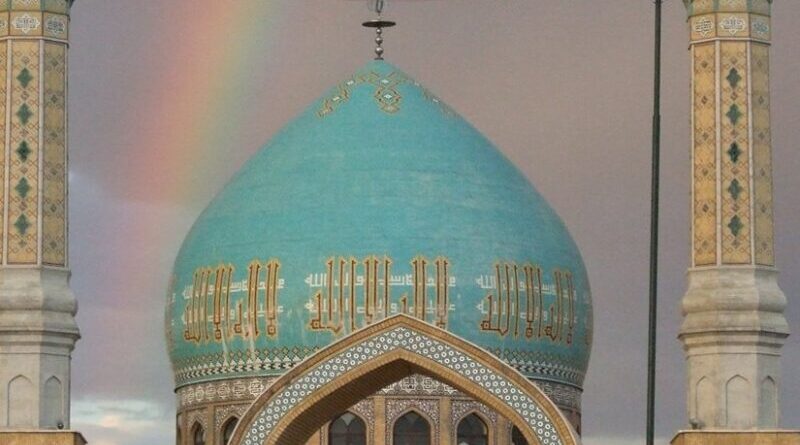Aspects Of Religious And Cultural Diversity In Middle East And North Africa – Analysis
In December 2010, the Arabs, sick to death with the corrupt patriarchal and tribal regimes that ruled them since independence, took to the streets to express their discontent and to ask for democracy. Initially, nobody believed that such a movement would topple well-rooted dictatorships. But the anger quickly grew in size and scope and became a true tsunami that swept away the ruling dictators and with them the proverbial lethargy of Arab society.
The media quickly dubbed the successive uprisings “Arab Spring” but, alas, soon this became a mere wishful thinking as counter-revolution, civil war and chaos started to take the place of the much-desired democracy and freedom. Many countries of the Middle East have gone awry instead of initiating a fresh start in national democratic empowerment.
Chaos, Mon Amour
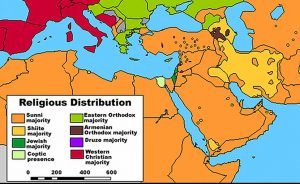
The Middle Easti is bent on its own timed destruction; this is taking place slowly but surely. The next two or three decades, or even may be more, will see the irreversible deconstruction of the Middle East prior to the emergence of a new region, totally different and totally metamorphosed into a numerous small states created either along sectarian or ethnic identity lines.
The military dictatorships, the traditional monarchies and the petro-dollar entities have since independence kept the region’s volcano under control through various artifices: brutal oppression, material persuasion or religious legitimacy. But, then two things happened: the digital revolution that empowered the powerless and the oppressed, this led to the Arab uprisings that started at the end of 2010 and set the stage for the chaos that will increase with time. As such, the Arab volcano has blown its top and entered into activity spewing dense fumes and tons of molten rock and will certainly go doing that for some time to come. The magma is not about to solidify soon.ii
The Middle East today is undoubtedly ridden by a multitude of conflicts, those that are currently in progress and many awaiting the propitious time to declare themselves officially in existence. The ultimate question of identity has never been raised, never considered, let alone solved in total fairness. In the Arab world everyone was Arab even if he were Berber/Amazigh, Kurd, Copt, Druze or else. The pan-Arab ideology negated all identities that existed in this region either by persuasion, dictatorship or religion and still do.
If you were from the Arab region, by definition, you could be nothing else but Arab. Arabism is an ideology, a language, but, also, a cultural religion on itself. The pan-Arabism exponents like to repeat on and on that the Arab language is the idiom spoken in paradise, in other words it means that if you reject their ethnic ideology you will end up in hell. This concept is, today, highlighted and defended by The Islamists, for whom it is a must for every pious Muslim to learn and speak Arabic, the language of the Koran and ahl al-jennah, paradise inhabitants.
This is obviously a very simplistic and racist argument, bearing in mind that the majority of Muslims do not speak Arabic. The number of Muslims worldwide is estimated at 1.5 billion, of which there are only 250 million Arabs, a simple calculation will send 1.25 billion Muslims to hell because they don’t speak Arabic, but, instead, Persian, Urdu, Malay, Swahili, Pulaar, Mandinke, Berber/Tamazight, etc. Even with the fires of the uprisings ravaging the whole region, many Arab ideologues still believe blindly in the Arab supremacy, come what may.
Ethnic cultures
Berber/Amazigh
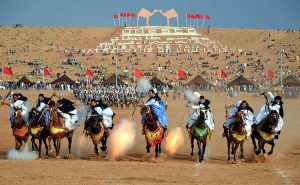
The Berbers occupy a huge area of North Africa from Morocco to western Egypt and as far south as Timbuktu and the Niger River. Historically, their influence extended to Sicily, southern Italy, and Spain and now enriches emigrant culture in contemporary France.
They are not a single “people” but can be defined by their prehistoric Mediterranean origins, by a common language (or language-group) and by their historical tendency to seek refuge from a long succession of conquerors (Punic, Roman, Byzantine, Arab, Ottoman, French) in remote mountain or desert communities, where they could preserve their independence, tongue and way of life.iii
The Berbers/Amazighs are very proud of their culture and are presently undergoing some kind of renaissance, especially after the official recognition of their civilization (The Royal Declaration of Ajdir in 2001) in Morocco, and the subsequent setting up of the Royal Institute of Amazigh Culture (Institut Royal de la Culture Amazighe -IRCAM-,) whose mission is to safeguard Berber culture from extinction and make provisions for teaching the language in schools. One of the first acts of this institute was the adoption of Tifinagh, an ancient Berber script, as the official alphabet of the Tamazight language in 2003. Since then the Berber militants have been struggling for the recognition of their language as an official idiom besides Arabic. In the wake of the Arab Spring, the Moroccan constitution was overhauled in 2011 and Tamazight was inscribed in it as an official language besides Arabic. The same official recognition is happening slowly but surely in Algeria, a bastion of pan-Arabism.iv
Casper White, a researcher based in Cairo and working for the Democracy Program of the Carter Center in Egypt, supporting its election observation missions, highlights identity politics in Algeria:v
“We are Algerians and Muslims but we are not Arabs”, begins Ait Bachir. He refers to the idea of an exclusive Algerian identity that began to take shape in the 1930s when the Arabic language and Islam were proclaimed as integral to the Algerian identity by the emerging national movement in opposition to French colonial rule. “Colonization brought the genocide of our identity, of our history, of our language [and] of our traditions,” President Abdelaziz Bouteflika said on Algerian television in 2006. Under the leadership of the National Liberation Front (FLN), this concept of an indivisible Algerian identity – nationalist, Muslim, and Arab – was further consolidated. The Berber minority in Algeria, estimated at between 6 and 10 million, have always maintained a strong determination to preserve their distinctive cultural identity and language. “Efforts to force us to use Arabic are a form of Arab imperialism”, explains Ait Bachir. Although Berber became an official — but not a national — language in Algeria in 2002, the Tamazight language is still not to be taught in public schools or in university. “Our community is traumatised – we feel like our body parts have been amputated.”
The Kurds
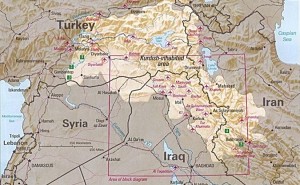
The Kurdish people comprise a large ethnic group of about 25 million that have always lived in the same place, and trace their roots back to the Medes of ancient Persia more than 2,500 years ago.
For nearly 3,000 years the Kurds have lived along the Tigris and Euphrates rivers, the cradle of civilization. This places their beginnings at the very source of the nations and in the immediate vicinity of history’s most important events.
Most Kurds are Muslims, and about 75% today are at least nominally members of the majority Sunni branch. As many as four million Kurds are Shiites, living mostly in Iran where the Shiite faith predominates. However, the Kurds generally strive to express their Islam in a distinct fashion. For example, the Sunni Muslim Kurds of Turkey have adopted the Shafi’i legal code, ignoring the general rule among the surrounding Arabs and Turks, who adhere to the Hanafi School.
Mystical practices and participation in Sufi orders are also widespread among Kurds. Many of these orders are considered heretical by rigid orthodox Muslims. Drawing heavily on shamanism, Zoroastrianism and elements of Christianity, Kurdish mysticism places emphasis on the direct experience of God through meditation, ecstatic experiences and the intercession of holy men or sheiks.
Most Kurds possess a tangible sense of the supernatural, readily acknowledging demonic activity in the form of evil spirits and curses; they often worship at shrines or other holy places.
The Kurds, very much like Berbers/Amazighs in that respect, have always dreamt of an independent country of their own, but geopolitics has not being favorable to them. So apart from the small state within a state, they have in Iraq. They are scattered in the area: Syria, Iran, Turkey, etc.
Islamic sectarian strife
If you believe that the Arab world is safe of religious wars, you are totally wrong. Prior to the Iranian revolution, the Arab world enjoyed period of Nahda, renaissance, during which religion coexisted peacefully with secularism. Most political regimes, then, were military dictatorships with socialist tendencies that strived to keep citizens away from politics by the means a generous welfare system, like in Iraq, Syria, Egypt, Algeria and Yemen. Then, the Iranian revolution occurred in 1979; the Shah was overthrown and replaced by a theocracy that had for ultimate goal the re-Islamization of the local society and the exportation of the revolution to the rest of the Muslim world.
The whole of the Arab world felt threatened by the Persian religious onslaught and especially the petro-dollar monarchies that have in their ranks marginalized Shiite minorities. To mobilize political support in the Arab world, these countries invoked pre-Islamic Arab-Persian enmity and wars.
Islamic religious sects in the Middle East and North Africa
Austere Wahhabism
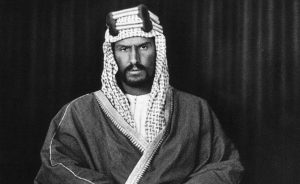
Wahhabism, as a movement, is generally associated with Saudi Arabia, and followers of this conservative ideology are inspired by the teachings of the fundamentalists of the kingdom. Abdulaziz Ibn Saud, who founded the Kingdom of Saudi Arabia in 1932, was a local ruler in the Arabian Peninsula when the World War I began. Following the outbreak of war, the British, who were fighting the Ottomans, established diplomatic ties with Abdulaziz, and the two sides signed the Treaty of Darin as early as 1915, which made the territory controlled by the House of Saud a British protectorate.
Abdulaziz was a descendent of Muhammad Al Saud, who ruled the Najd area of the peninsula in the 18th century and was a friend of the Wahhabism founder Muhammad Ibn Abd al-Wahhab. Wahhabism is a popular revivalist movement instigated by an eighteenth century theologian, Muhammad Ibn Abd al-Wahhab (1703–1792) from Najd, Saudi Arabia. It is a religious movement among fundamentalist Islamic believers, with an aspiration to return to the earliest fundamental Islamic sources of the Koran and Hadith, with inspiration from the teachings of medieval theologian Ibn Taymiyyah and the early jurist Ahmad ibn Hanbal. Muhammad Al Saud was the one who first chose Wahhabism for his tribe.
Feeling threatened by the Iranian grand project, the Saudis, with the help of billions of petro-dollars, tried to bring the inter-governmental Islamic organizations under their influence, institutions like: OIC (Organization of Islamic Cooperation,) IDB (Islamic Development Bank,) ISESCO (Islamic Educational, Scientific and Cultural Organization,) etc. and export their brand of Islam: Wahhabism through civil society organizations in the Muslim world. Because of the money incentive many Muslims adopted Wahhabism, in spite of its harsh scripture and ideology.
To counter combative Iranian Shiism, the Saudis bankrolled Ben Laden in his Afghan Jihad machinery against the Soviets. The Americans blessed the enterprise and provided sophisticated weaponry to defeat the Soviets. Osama Bin Laden recruited Jihadists from all over the Muslim world. Once the war was won in 1989, Osama Bin Laden and the Jihadists felt forgotten and marginalized by the Saudis and the Americans together.
Ultimately, the Jihadists were made to return to their respective countries and tried to put their military experience to use to overthrow existing regimes, they were either killed or sent to prison. As for Bin Laden, to inscribe his name in gold in the annals of history, he masterminded the unfortunate and condemnable 11 of September events that changed the world.
Salafiyya
Originating in medieval Islamic texts, the concept of salafiyya has come to refer to a wide variety of things over the years. The Arabic word derives from the terms “as-salaf as-salih,” which means: “the venerable ancestors” or “the venerable predecessors.”
The dominant tradition in salafiyya has to do with “getting back to the roots” of Islam and restoring traditional beliefs and practices as well as the rule of the Caliphate. Sometimes, this effort is moderate and can even incorporate modernist influences, as with the case of al-Afghani (a salafist reformer from the 1800’s who tried to reconcile modernism and Islam).vi
Salafiyya thrives on the economic hardships endured by most Muslims in the Middle East. Religious leaders tell them that the earliest Muslims knew no such hardships because they faithfully applied the principle of zakat, or alms for the poor. Because of this, even the richest and powerful Muslims had to donate to ensure that the poorest were sustained.
Unhappy with the religious state of Affairs in the Arab world, a more violent Islamic sect came into being: the Salafiyya Jihadiya, it had in mind a return to the ancient times of the Caliphate by the means of blood and fear. After terrorist attacks in Morocco on May 2003 and various other counties, this movement was decapitated and is leaders imprisoned, as for the remaining they adopted a vociferous attitude making use of verbal violence only or were literally co-opted by local Arab regimes.
However, it does not mean that the Salafiyya Jihadiya is disarmed; it is resuscitating in troubled spots such as Syria and Iraq where they can indulge in their violent religious ideology without the fear of retribution. Their vision of the future is the re-Islamization of society and the return to the past model of the caliphate: ISIS is, somewhat, the flag bearer of this approach, today.
Beyond that they have no model of society, other than the orthodox Islamic way of life based on the strict application of shari’a law. So the basic concept of return to the “good past” can only be achieved through religious violence in three ways:
- Takfir,vii excommunication from the religious community of all those who are against the main trend of salafiyya. This could actually mean, unfortunately, most of the time, the call for their assassination because they are seen as a hazard to this school of thought. The assassination is often undertaken by religious zealots by firing at blank range point or by utilizing the al-Qaeda like notorious terrorists;
2- Tarhib, terrorizing the population by letting them know that if they don’t carry out what their sheiks tell them they would be committed to go to hell for not following the edicts of the “true” Islamic religion. This approach works very well with the illiterate poor whose knowledge of religion and the world is very limited; and
3- Jihad, the holy war to eliminate all the miscreants and the infidels to make way to Islam
Salafiyya jihadiya is active and prospering, today, in Iraq, Syria, Yemen, Mauritania, Tunisia and Libya. It has tried to get a foothold in Morocco but was defeated by the government anti-terrorist laws and lack of following and interest among the population.
Muslim Brotherhood/Ikhwan
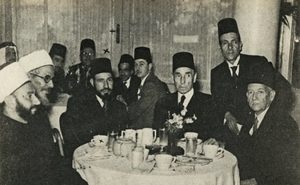
The Muslim Brothers movement was founded in Ismailia, Egypt in March 1928 by Hassan al-Banna, along with six workers of the Suez Canal Company, as a pan-Islamic, religious, political, and social movement.
Hassan al-Banna was influenced by the reformers Mohammed Abdou and Rachid Reda.
He believed that real renaissance can only be achieved through the return to the orthodox religion and the application of the tenets of Islam faithfully.
The Brotherhood’s credo was and is:
“Allah is our objective; the Quran is our law, the Prophet is our leader; Jihad is our way; and dying in the way of Allah is the highest of our aspirations.”
The submission of the brotherhood’s members under this credo is the unquestionable proof to their absolute obedience to the Muslim Brotherhood’s leadership.
Since its founding, the Muslim Brotherhood has been very close to the aspirations of the poor and working class of Egypt and its actions in favor of the rank and file has earned it sympathy all over the Arab region and the Muslim World and led to the creation of local chapters of this interesting religious institution in various countries:
- Justice and Development Party in Morocco, currently leading the government;
- In Bahrain, the Muslim Brotherhood is represented by the al-Islah Society and its political wing, the al-Manbar Islamic Society. Following parliamentary elections in 2002, al-Manbar became the largest party with eight seats in the forty seats of the Chamber of Deputies. Prominent members of Al Menbar include Dr Salah Abdulrahman, Dr. Salah Al Jowder, and the outspoken MP, Muhammad Khaled. The party has, generally, backed government-sponsored legislation on economic issues, but has sought a clampdown on pop concerts, sorcery and soothsayers. It has, strongly, opposed the government’s accession to the International Covenant on Civil and Political Rightsviii on the grounds that this would give Muslim citizens the right to change religion, something which is not acceptable at all in dar al-Islam.
- The Muslim Brotherhood in Syria was founded in 1945, a year before independence from France. In the first decade or so of independence it was part of the legal opposition, and in the 1961 parliamentary elections it won ten seats (5.8% of the house). But after the 1963 coup that brought the Baath Party to power it was banned. It played a major role in the mainly Sunni-based movement that opposed the secularist, pan-Arab Baath party. This conflict developed into an armed struggle that continued until culminating in the Hama uprisingsix of 1982, when the rebellion was crushed by the military of Hafed al-Assad.
- The Jordanian branch of the Muslim Brotherhood was formed in 1942, and is a strong factor in Jordanian politics. While most political parties and movements were banned for a long time in Jordan such as Hizb at-Tahrir, the Brotherhood was exempted and allowed to operate by the Jordanian monarchy. The Jordanian Brotherhood has formed its own political party, the Islamic Action Front, which has the largest number of seats of any party in the Jordanian parliament.
- The Iraqi Islamic Party was formed in 1960 as the Iraqi branch of the Brotherhood, but was banned from 1961, during the nationalist rule of Abdelkarim Qasem. As government repression hardened under the Baath Party from February 1963, the group was forced to continue underground. After the fall of the Saddam Hussein regime in 2003, the Islamic Party has reemerged as one of the main advocates of the country’s Sunni community. The Islamic Party has been sharply critical of the U.S.-led occupation of Iraq, but participates in the political process. Its leader is Tariq Al-Hashimi.
- In Palestine, in 1987, following the Intifada, the Islamic Resistance Movement, or Hamas was established from Brotherhood-affiliated charities and social institutions that had gained a strong foothold among the local population. During the first Intifada (1987–93), Hamas militarized and transformed itself into one of the strongest Palestinian militant groups.
- The Muslim Brotherhood in Kuwait is represented in the Kuwaiti parliament by Hadas.
- The Muslim Brotherhood is the political arm of the Yemeni Congregation for Reform, commonly known as Islah. Former President Ali Abdellah Saleh made a lot of effort to entrench the accusations of Islah being in league with al-Qaeda, but he failed to present any, even a weak, evidence to support his claims.
- Like their counterparts elsewhere in the Islamic world in general, the Egyptian Muslim Brotherhood has influenced the Tunisian Islamists. One of the notable organizations that was influenced and inspired by the Brotherhood is Ennahda (The Revival or Renaissance Party), which is Tunisia’s major Islamist political grouping. An Islamist, Rachid Ghannouchi, founded the organization in 1981 while studying in Damascus and Paris and embraced the ideology of the Muslim Brotherhood, which he disseminated on his return to Tunisia.
- The Libyan branch of the Muslim Brotherhood was founded in 1949, but it was not able to operate openly until after the 2011 Libyan civil war. It held its first public press conference on 17 November 2011, and on 24 December the Brotherhood announced that it would form the Justice and Construction Party (JCP) and contest the General National Congress the following year.
- In 2007 the National Rally for Reform and Development, better known as Tawassoul, was legalized as a political party. The party is associated with the Mauritanian branch of the Muslim Brotherhood.
Shia Islam
The adepts of Shia Islam believe that before his death in 632, the prophet Muhammad selected Ali Ibnu Abi Talib, a member of his household, known as ahl al-bayt, as his legitimate successor and that his companions designated Abu Bakr as a Caliph, instead. As a result, the Shiites do venerate Ali, almost as a prophet and take upon themselves the blame for his assassination in 661. Thus, on the beginning of every Hijra year, during the Ashura celebration, they publically flagellate themselves to mark his martyrdom.
The Shia are a majority in Iran and also in Bahrain. In the aftermath of the Arab Spring, The Bahraini Shia took to the streets to protest political unfairness: a majority Shia ruled by a minority Sunni government. Scared by the prospects that Bahrain might fall to Shia rule, Saudi Arabia and the Sunni Gulf states invaded Bahrain to tilt the scale in favor of Sunni rule, for fear this country will become a client state of Iran like what happened in Iraq after the demise of the Sunni dictator Saddam.
Indeed, today’s Iraq is plagued by a protracted civil war between the Shia-majority government and the Sunni ISIS in the north and this strife will certainly not end with the fall of ISIS, at the hands of the international coalition. The Sunnis will continue their fight believing, hard as a nai,l that their country has been made a province of Iran and that the government takes orders from the latter in Tehran.
The Shia are present, also, in Kuwait, Qatar, Oman and Saudi Arabia where they are not tolerated by the central government. Indeed, the Saudis to show their distaste of this minority group executed their religious leader Sheikh Nimr al-Nimr, who led a popular uprising in the Eastern oil-rich province of Dahran.x
In Lebanon, the Shias, living mostly in the south, have, under the fierce Hezbullah leadership, set up a state within a state which is in war with Israel and in cold war with the Lebanese Sunnis.
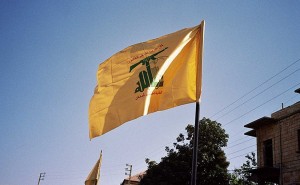
Saudi Arabia is, presently, fighting a sectarian war against Iran by proxy in both Yemen, where Houthis aided by the ex-dictator Ali Saleh, have taken over the country. To restore the Sunni rule, Saudi Arabia has mounted a Sunni Arab coalition to dislodge the Shia from the capital Sanaa. Concurrently, it is fighting another war in Syria, with the hope to put an end to the Shia minority government of Assad, behind whom Iran is putting all her weight, as well as, fierce Hezbullah fighters.
For Dieter Bednarz, Christoph Reuter and Bernhard Zand, from the German media Spiegel, the war in Yemen is directed at Iran:xi
“The Saudi military coalition began its intervention in Yemen in the name of security. But after just a week, it has become clear that the top priority of the alliance is not that of creating a balance of power between the two adversarial camps in the Yemen conflict — which pits Shiite Houthi rebels, who have joined together with former Yemeni President Ali Abdullah Saleh (who was ousted in a 2011 “Arab Spring” uprising), against Saudi-backed government troops. Indeed, the conflict is more of a complicated domestic struggle than a purely sectarian fight. Still, the Saudi monarchy’s intervention is primarily aimed at its ideological rival: Iran. At the same time, the military operation is a chance for Saudi King Salman bin Abdulaziz Al Saud to demonstrate his independence from the US — as well as to perhaps prove his country’s military leadership in the region as a complement to its longstanding economic strength. What is clear, however, is that the brewing Sunni-Shiite struggle in the Middle East has the potential for not just destroying Yemen, but also for turning into a disaster for Saudi Arabia.”
The Sunni-Shia gap is widening more and more as Iran is trying to become nuclear. This has pushed conservative Saudi Arabia to contemplate possible alliance with its arch enemy Israel.
All in all, Shias who are growing in numbers in the Arab world are discriminated against and the same is true of the Sunnis in Iran and it is more likely that things will get worse in the future as both Saudi Arabia and Iran are jockeying for leadership of the Middle East and the Muslim world.
For Murtaza Hussain, a Toronto-based writer and analyst with a focus on issues related to Middle Eastern politics, It is not the 14-century old schism between Sunnis and Shias that is responsible for the sectarian strife but rather modern made ideology of identities:xii
“Those who ignorantly claim that progress can be attained through the enforcement of strict ideological purity should take heed of the past and resist the temptation towards religious chauvinism. The conflict which some claim exists today between Sunni and Shia Muslims is a product of very recent global events; blowback from the 1979 Iranian Revolution and the petro-dollar fuelled global rise of Wahhabi reactionaries. It is decidedly not the continuation of any “1,400 year war” between Sunnis and Shias but is driven instead by the very modern phenomena of identity politics. Factions on both sides have created false histories for their own political benefit and have manufactured symbols and rituals which draw upon ancient history but are in fact entirely modern creations. Furthermore, Western military powers have sought to amplify these divisions to generate internecine conflicts within Muslim societies and engineer a bloodbath which will be to their own benefit.”
Ethnic diversity at the crossroads of civilizations
Situated between Africa, Asia, and Europe, the Middle East has been a crossroads for traders, travelers, and empire builders for thousands of years. Africans, Central Asians, and Celts have all added to the ethnic mix. Major ethnic groups in the greater Middle East today include Arabs, Iranians (also known as Persians), Turks, Jews, Kurds, Berber/Amazigh, Armenians, Nubians, Azeris, and Greeks.
Most of the countries in this region are multiethnic. But, even as diversity enhances the cultural richness of a society, it unfortunately may, also, lead to political conflict.
The Kurds, for example, do not have their own nation-state, but are instead spread across Turkey, Iraq, Iran, and Syria. Their political and military attempts to create an autonomous Kurdistan have been strongly resisted by those states.
Likewise the Berber/Amazigh who inhabit Morocco, Algeria, Tunisia, Libya, Egypt and Mauritania, are still struggling to have their culture and language fully recognized by the governments of these countries, who are in their majority not democratically elected and fear that such an act will erode their power base and lead to legitimate demands of power-sharing.
The multiplicity of languages spoken in the greater Middle East reflects its ethnic diversity. Most of these languages come from three major language families:
- Semitic (including Arabic, Hebrew, Tamazight and Aramaic)
- Indo-European (Kurdish, Persian, Armenian)
- Turkic (Turkish, Azeri)
These language families reflect the successive migrations of different peoples into the region. A quick examination of these languages reveals the influence they have had on each other. Persian, for example, is written in Arabic script, while Turkish incorporates vocabulary words from Persian and Arabic. Arabic itself is spoken in regional dialectics that are not always mutually understood. Some ethnic and religious communities have preserved “native” languages for religious use, such as Coptic and Greek or for cultural identity as is the case for the Berbers/Amazigh.
Other Religions Of The Book Of The Middle East
In the cultural mosaic of the Middle East, besides Islam, the predominant faith in the region, there are other religions of the book: Christianity and Judaism and not to forget, of course, Druze. The faithful of some of theses religions are certainly minority groups numerically speaking, but culturally they have quite an important imprint on society and they are economically and politically very potent.
The Middle East is the birthplace of Judaism, Christianity, and Islam, all monotheistic religions that grew from the same tradition. Each religion used the texts from earlier groups, and so they share many rules and beliefs. For example, Islam and Judaism observe the same dietary rules and have a similar focus on religion as a foundation for civil law. All three share a tradition of prophets, from Adam and Abraham to Solomon and Joseph. Jesus is significant for both Christianity and Islam, and Muslims, in addition, follow the teachings of the Prophet Muhammad.
Christianity
The lack of official data on the Christian populations of the Middle East makes it difficult to confirm, but it is estimated that there are between 12 and 16 million Christians living in this area. Christianity is, also, a monotheistic religion with its origins in the Middle East, and its teachings are based on the old and new testaments of the Bible. Many different Christian sects have their origins in the Middle East and are still present in the region. Just a few examples of these sects include: Maronite Christians, Greek Orthodox, Armenian Orthodox, Coptic and Chaldean Christians, among many others.
The Copts
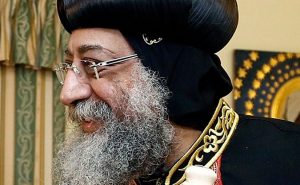
Copts in Egypt constitute the largest Christian community in the Middle East, as well as the largest religious minority in the region, accounting for an estimated 10% of the Egyptian population. Most Copts adhere to the Coptic Church of Alexandria. The remainder of around 800,000 is divided between the Coptic Catholic and various Coptic Protestant churches.
Their position improved dramatically under the rule of Muhammad Ali in the early 19th century. He abolished the jizya (a poll tax on non-Muslims) and allowed Egyptians (Copts as well as Muslims) to enroll in the army.
Copts participated in the Egyptian national movement for independence and occupied many influential positions. Two significant cultural achievements include the founding of the Coptic Museum in 1910 and the Higher Institute of Coptic Studies in 1954. Some prominent Coptic thinkers from this period are Salama Moussa, Louis Awwad and Secretary General of the Wafd Party Makram Obayd.
The Arab Christians
The Arab Christians are an estimated 13 million Christians still living in the Middle East in countries like Syria, Jordan, Palestine, Iraq, Iran, Israel and Lebanon. They are in Business, education, finance, banking and politics.
The Christian presence in the Middle East dates back, of course, to the advent of Jesus Christ during the Roman Empire. That 2,000-year presence has gone uninterrupted since, especially in the countries of the Levant: Lebanon, Palestine/Israel, Syria and Egypt. But, it has been far from a unified presence.
The Eastern and Western Church don’t quite see eye to eye and haven’t for about 1,500 years.
Lebanon’s Maronites split off from the Vatican, in a huff, centuries ago, then agreed to return to the fold, preserving to their rites, dogmas and customs of their choice.
Much of the region either forcibly or voluntarily converted to Islam in the 7th and 8th centuries. In the Middle Ages, the European Crusades attempted, brutally, repeatedly but ultimately unsuccessfully, to restore Christian hegemony over the region.
Since then, only Lebanon has maintained a Christian population approaching anything like a plurality, although Egypt maintains the single-largest Christian population in the Middle East.
Judaism
Israel
The historical predecessor of both Christianity and Islam is Judaism, and it is practiced by approximately 6 million people in the Middle East. It is, also, a monotheistic religion based on the Torah, which is also the old testament of the Christian Bible. Judaism is the official religion of the state of Israel.
Judaism is the religious culture of the Jewish people. It is one of the first recorded monotheistic faiths and one of the oldest religious traditions still practiced today. The tenets and history of Judaism are the major part of the foundation of other Abrahamic religions, including Christianity and Islam. For all of these reasons, Judaism has been a major force in shaping the world.
Judaism originated as the religion of nomadic people in the western part of the Fertile Crescent. The Hebrew people believed that there was only one God. Monotheism was a unique idea in the world when it originated 3,500 years ago.
By the 1980s Jews of Middle Eastern origin – adot ha-mizrah – comprised well over half of Israel’s Jewish population. Migration to Israel by Jews from the former Soviet Union made the percentages of Middle Eastern and European origin groups equal in the 1990s. By 2000 the Jewish community in Turkey stood at about 20,000. Iranian Jewry functioned actively until the revolution of 1979 that established the Islamic republic. Jews then immigrated to Israel, Europe, and the United States, and in 1989 about 22,000 remained in Iran. Very few Jews now reside in the Arab world; the largest group – about 3,000 – lives in Morocco. Since the 1980s Morocco has encouraged Jewish tourists from Israel and elsewhere, and Tunisia has done the same since the 1990s.
The poor relations between Israel and most of its Arab neighbors are sometimes described in terms of a perpetual religious conflict between Jews and Muslims. This reading, however, is too simplistic. Although control over important historical sites of Judaism, Christianity, and Islam is a factor in the disagreements, many of the details that stall negotiations have to do with control of land and access to water resources and most importantly the restoration of the Palestinian state and homeland.
Furthermore, many Palestinians who demand restitution for their property are Christian, not Muslim, and Egypt’s historic treaty with Israel provides a model for how Muslim and Jewish neighbors can live peaceably.
Judaism in Morocco
Jews have lived in Morocco for nearly two millennia, and Morocco’s Jewish community, which once numbered more than 250,000, remains the largest in the Muslim world. They are estimated at about 3,000 today. They migrated to Morocco in the year 72 AD, at the time of the destruction of the Second Temple by the Romans.
For two thousand years of their existence, Moroccan Jews Have showed great love and allegiance to Morocco, their land and country, and this unique feeling is even stronger today for those who have left the country. There is a tremendous ongoing dialogue, esteem and cooperation between Muslims and Jews within Morocco. A good illustration of that is the grotto that exists in the city of Sefrou, nicknamed Little Jerusalem, which is called: Kaf al-Moumen, “The Cave of the Faithfull”, where a Muslim and a Jewish saints are, supposedly, buried and are revered by both Muslims and Jews in turn.xiii
There is an incredible symbiosis between Islam and Judaism in Morocco and this is the result of strong commonality resulting from a solid cultural substratum. Indeed, while the Moroccan Jews show obsequious love to their country of origin and come back to celebrate the religious rite of Hailula, their Muslim brethren regret their departure through such films as: “Tinghir, Jerusalem: echoes of the Mellah.”xiv In the wake of the Arab Spring, the Moroccan constitution was overhauled and Hebraic tradition was highlighted in its wording and considered a major confluent of Moroccan identity and culture.xv
“A sovereign Muslim State, attached to its national unity and to its territorial integrity, the Kingdom of Morocco intends to preserve, in its plentitude and its diversity, its one and indivisible national identity. Its unity, is forged by the convergence of its Arab-Islamist, Berber [amazighe] and Saharan-Hassanic [saharo-hassanie] components, nourished and enriched by its African, Andalusian, Hebraic (emphasis mine, Mohamed Chtatou) and Mediterranean influences [affluents].”
Druze
The Druze populations live primarily in Lebanon and Syria, and they are another monotheistic religion of the Middle East. Although commonly not regarded as Muslims by others, the Druze do consider themselves a sect of Islam that split from the Shi’a. The Druze believe that the Fatimid Caliph al-Hakim was an incarnation of God who disappeared in 1021 but will return, bringing a Golden Age to believers.
Conclusion
The times are changing in the Middle East region and the Arabs have to come to term to many hard realities if they want to survive as a race and civilization:
- They have to solve the identity issue once for all by accepting the cultural and political rights of the ethnic and religious minorities in their ranks;
- They have to opt for full democracy, if they want to survive;
- Provide equal opportunity to everyone and especially women and the youth;
- Stop justifying everything by religion;
- Empower the youth and women;
- Abolish tribal practices and patriarchal traditions; and
- Accept the tenets of diversity in faith, ethnicity and language.
If these principles are not implemented soon, the region will be engulfed in serious strife and conflicts that will take decades to settle.
Endnotes:
i. This paper focuses in the Arab Middle East and North Africa exclusively.
ii. https://www.academia.edu/8694740/Chaos_is_coming_to_the_Middle_East
iii. Brett, M. & E. Fentress. 1996. The Berbers, Oxford, UK: Blackwell.
This book, by an archaeologist and a historian, provides an excellent summary of Berber history and culture. It casts a critical eye on the traditional historical sources (almost all written by the conquerors, not by the Berbers themselves) and re-examines them in the light of contemporary archaeological and anthropological evidence. It is especially good in two areas: the Berbers’ relationship to Islam (their adopted religion) and the relative freedom of women in Berber society. The black-and-white illustrations and maps are of uneven quality but nevertheless helpful in visualizing this complex and little-known culture.
iv. http://www.bbc.com/news/world-africa-35515769
v. http://www.fairobserver.com/author/Casper%20Wuite/
vi. Sayyid Jamāl al-Dīn al-Afghānī (Dari/Persian: سید جمالالدین افغانی), also known as Sayyid Jamāl ad-Dīn Asadābādī (Persian: سید جمالالدین اسدآبادی) and commonly known as Al-Afghani (1838/1839 – 9 March 1897), was a political activist and Islamic ideologist in the Muslim world during the late 19th century, particularly in the Middle East, South Asia and Europe. One of the founders of Islamic Modernism and an advocate of Pan-Islamic unity, he has been described as being less interested in minor differences in Islamic jurisprudence than he was in organizing a Muslim response to Western pressure.
Cf. https://en.wikipedia.org/wiki/Jam%C4%81l_al-D%C4%ABn_al-Afgh%C4%81n%C4%AB
vii. In Islamic law, takfir or takfeer (Arabic: تكفير takfīr) refers to the practice of excommunication, one Muslim declaring another Muslim as kafir (non-believer). The act which precipitates takfir is termed the mukaffir. An ill-founded takfir accusation is a major forbidden act.
Cf. https://en.wikipedia.org/wiki/Takfir
viii. http://www.ohchr.org/EN/ProfessionalInterest/Pages/CCPR.aspx
ix. The Hama massacre (Arabic: مجزرة حماة) occurred in February 1982, when the Syrian Arab Army and the Defense Companies, under the orders of the country’s president Hafez al-Assad, besieged the town of Hama for 27 days in order to quell an uprising by the Muslim Brotherhood against al-Assad’s government. Themassacre, carried out by the Syrian Army under commanding General Rifaat al-Assad, effectively ended the campaign begun in 1976 by Sunni Muslim groups, including the Muslim Brotherhood, against the government.
Initial diplomatic reports from Western countries stated that 1,000 were killed. Subsequent estimates vary, with the lower estimates claiming that at least 10,000 Syrian citizens were killed, while others put the number at 20,000 (Robert Fisk), or 40,000 (Syrian Human Rights Committee). About 1,000 Syrian soldiers were killed during the operation and large parts of the old city were destroyed. The attack has been described as one of “the single deadliest acts by any Arab government against its own people in the modern Middle East”. According to Syrian opposition, the vast majority of the victims were civilians.
According to Syrian media, anti-government rebels initiated the fighting, who “pounced on our comrades while sleeping in their homes and killed whomever they could kill of women and children, mutilating the bodies of the martyrs in the streets, driven, like mad dogs, by their black hatred.” Security forces then “rose to confront these crimes” and “taught the murderers a lesson that has snuffed out their breath”.
Cf. https://en.wikipedia.org/wiki/1982_Hama_massacre
x. http://www.nytimes.com/2016/01/04/world/middleeast/iran-saudi-arabia-execution-sheikh-nimr.html
xi. http://www.spiegel.de/international/world/saudi-arabia-and-iran-fighting-proxy-war-in-yemen-a-1027056.html
xii. http://www.aljazeera.com/indepth/opinion/2013/07/2013719220768151.html
xiii. http://www.jpost.com/Opinion/Morocco-A-true-melting-pot-of-creeds-and-cultures-450908
xiv. https://vimeo.com/37479002
xv. https://www.constituteproject.org/constitution/Morocco_2011.pdf

